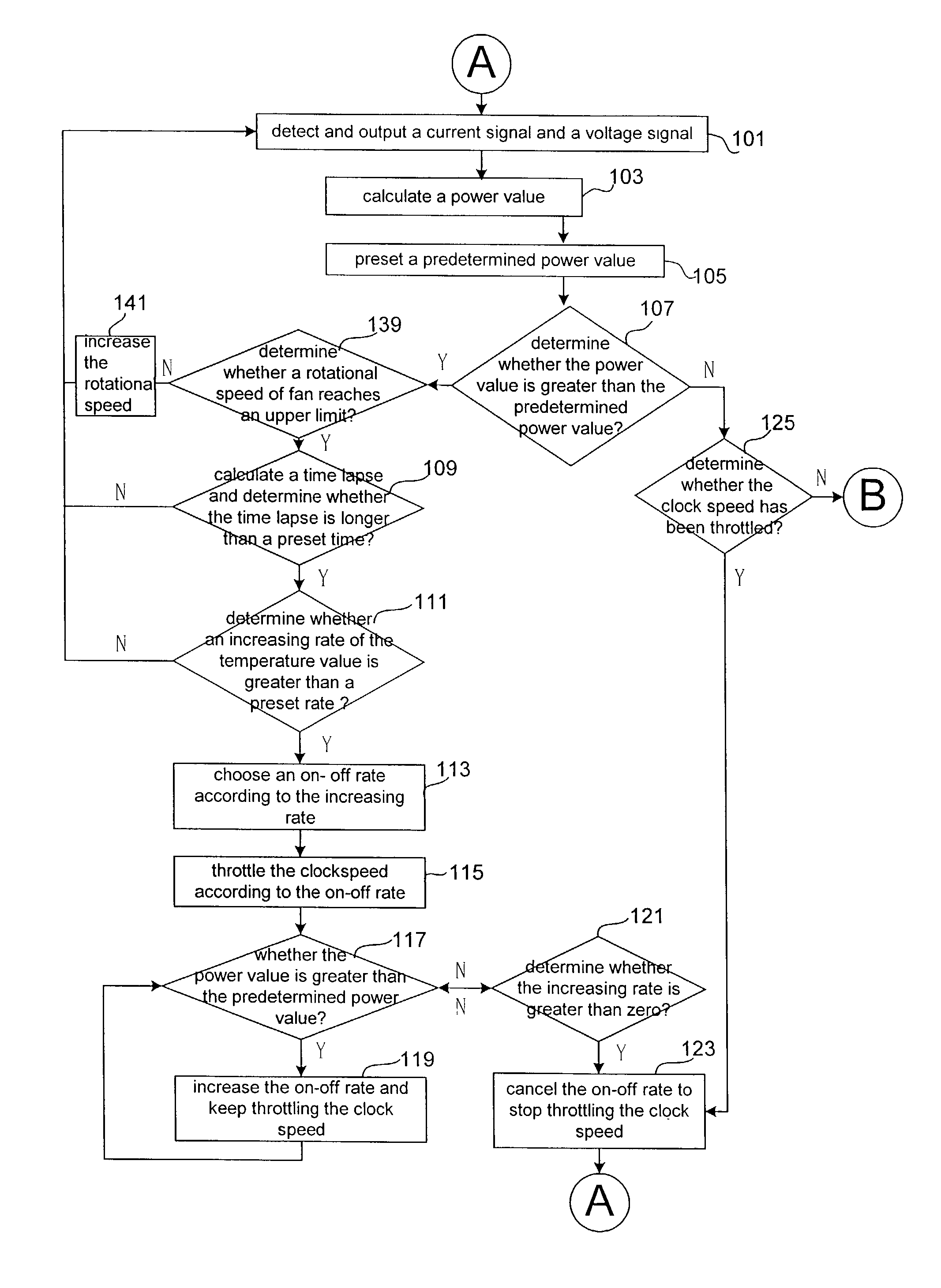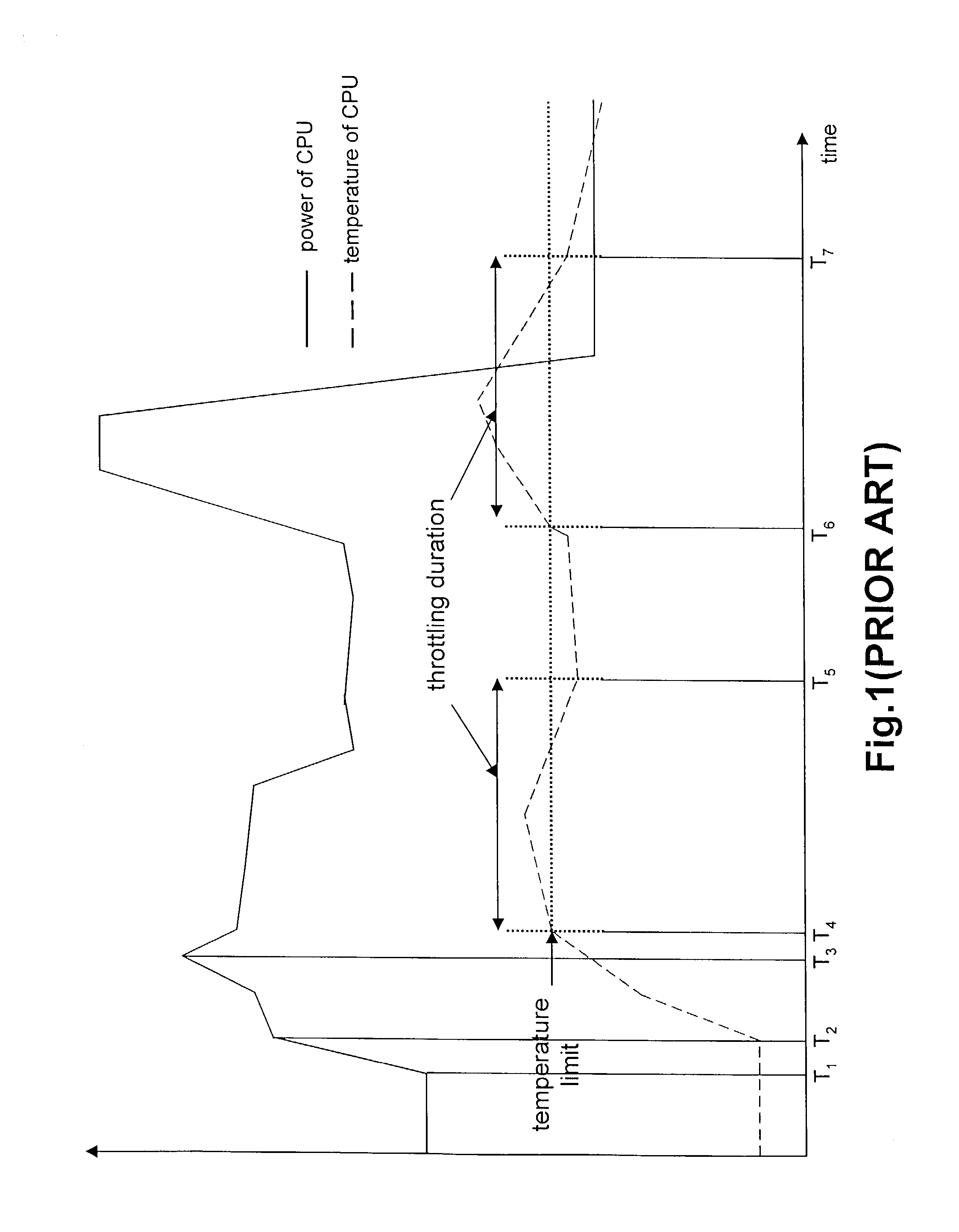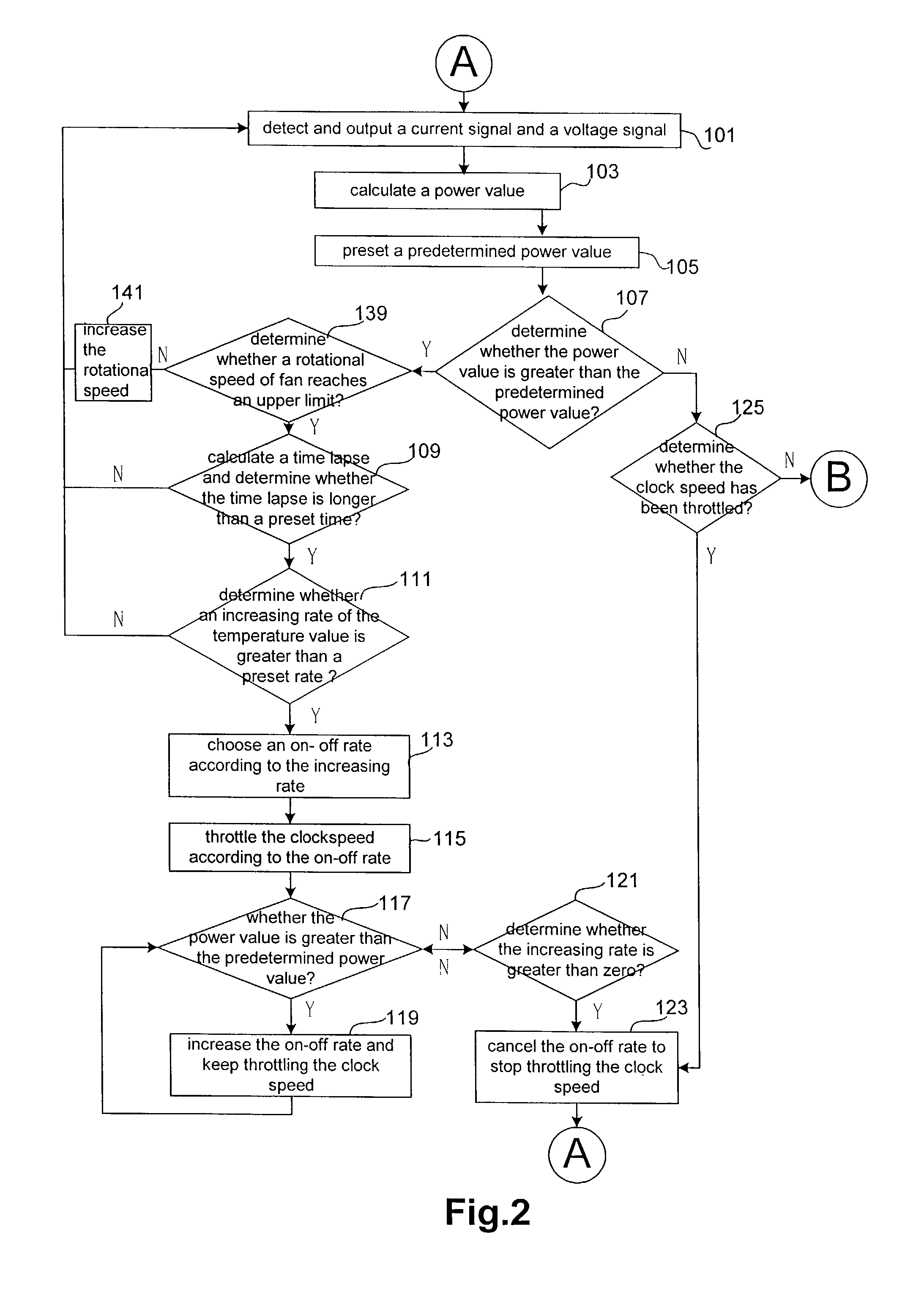System and method for throttling a clock speed by comparing a power value with a predetermined power value wherein the predetermined power value is based on an increasing rate of a parameter
- Summary
- Abstract
- Description
- Claims
- Application Information
AI Technical Summary
Problems solved by technology
Method used
Image
Examples
Embodiment Construction
[0022]FIG. 2 and FIG. 3 are flow charts of an exemplary method for controlling a clock speed according to an exemplary embodiment of the present invention. In the embodiment, the method of the present invention is utilized to control a clock speed of an electronic system. The method includes the following steps, from step 101 to step 141.
[0023]First of all, the step 101 detects and outputs a voltage signal and a current signal as the electronic system is operating.
[0024]Next, in response to the voltage signal and the current signal, the step 103 calculates a power value.
[0025]The step 107 determines whether the power value is greater than a predetermined power value.
[0026]In this embodiment, the method further includes a step 105. The step 105 presets the predetermined power value according to a specific condition of the electronic system. Additionally, if the electronic system further includes a thermal sensor, the step 105 presets the predetermined power value according to a tempe...
PUM
 Login to view more
Login to view more Abstract
Description
Claims
Application Information
 Login to view more
Login to view more - R&D Engineer
- R&D Manager
- IP Professional
- Industry Leading Data Capabilities
- Powerful AI technology
- Patent DNA Extraction
Browse by: Latest US Patents, China's latest patents, Technical Efficacy Thesaurus, Application Domain, Technology Topic.
© 2024 PatSnap. All rights reserved.Legal|Privacy policy|Modern Slavery Act Transparency Statement|Sitemap



